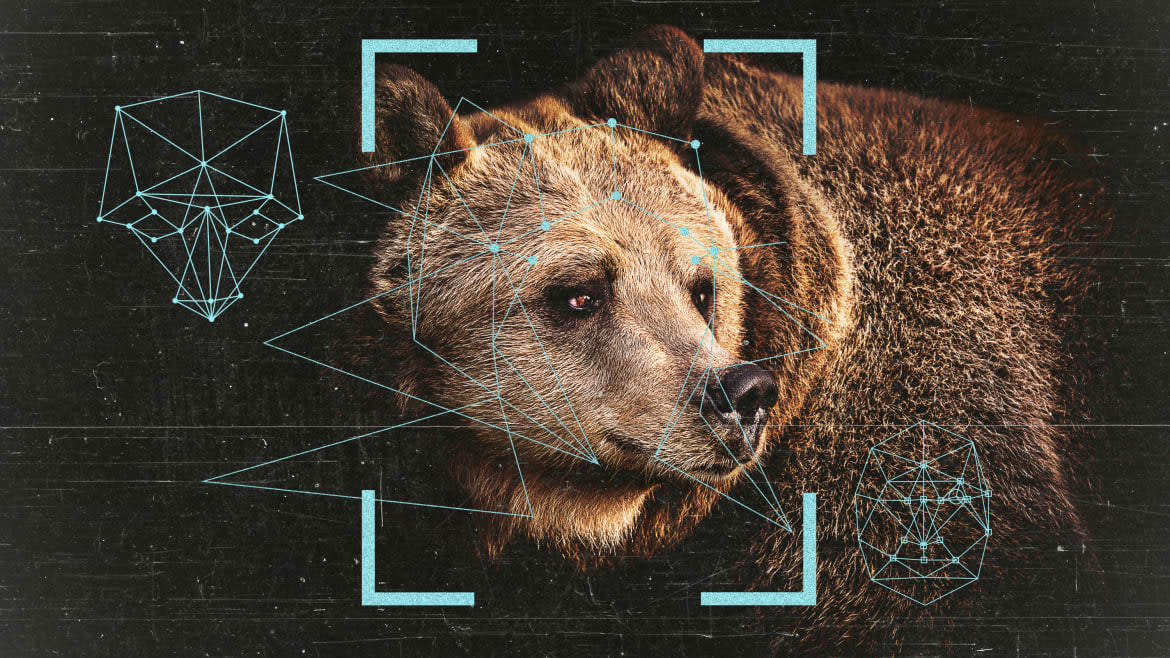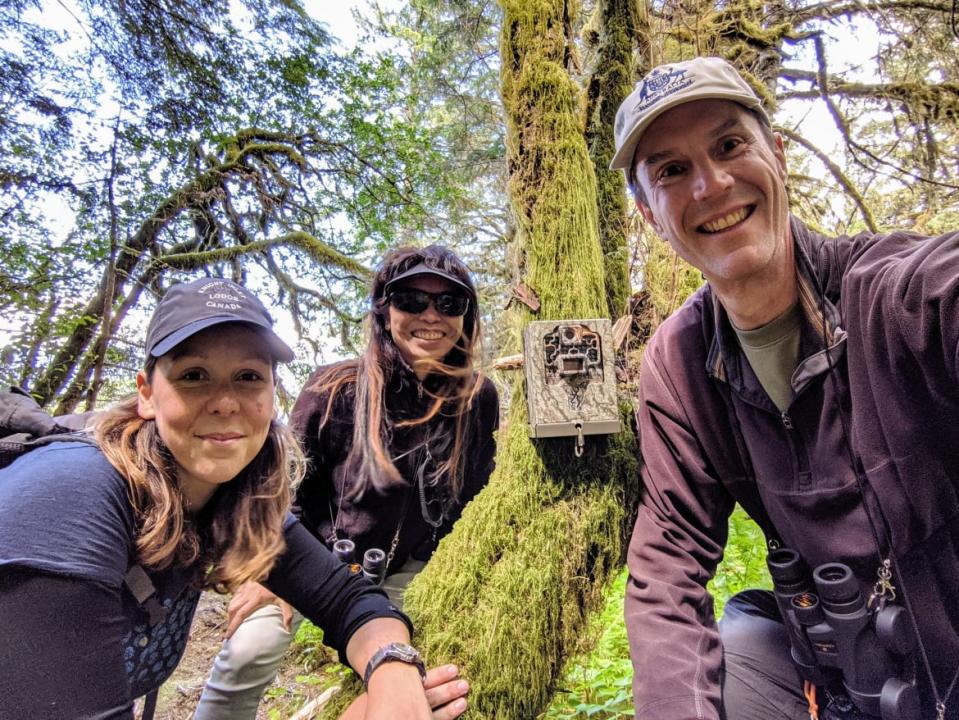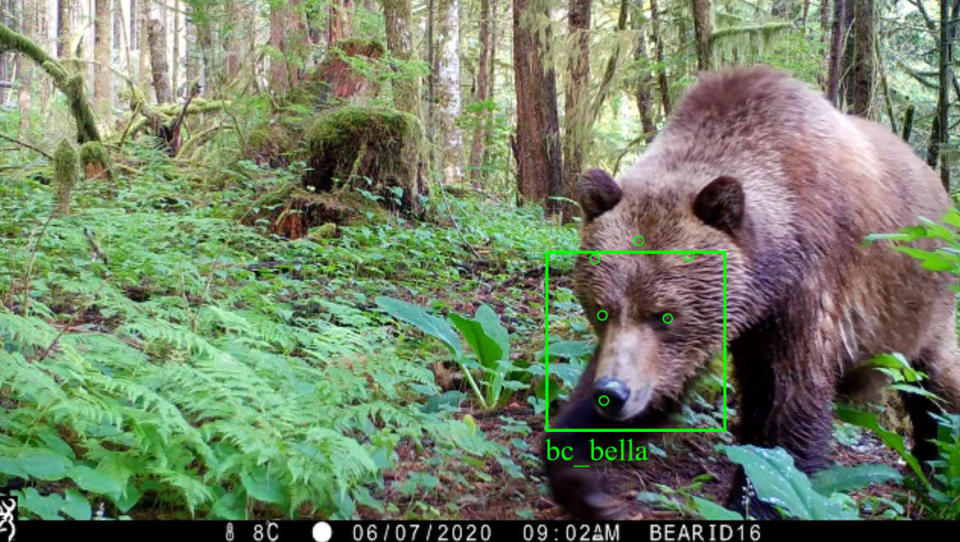Facial Recognition AI May Help Us Save Fat Bears From Human Danger

In case you didn’t know, it’s Fat Bear Week—the annual tournament that pits the brown bears of Katmai National Park against each other to see who gained the most weight over the year. You can vote for your favorite bear in a March Madness-style bracket where one is crowned the biggest bear of the bunch by the week’s end.
It’s a fun and cheeky project hosted by the U.S. National Parks Service and Explore.org, a multimedia organization best known for the live cams of wildlife like the Brooks Falls Brown Bears of Katmai National Park. While the stream enjoys a healthy and devoted following throughout the year—folks who have created fan wikis, forums, and stan communities for individual bears—its viewer count balloons like its eponymous creatures when Fat Bear Week rolls around.
And, as it turns out, it’s these very same viewers who can help keep the bears alive and thriving in a world that’s rapidly endangering their ecosystems.
“We have thousands who watch the bear cams, especially right now with Fat Bear Week,” Ed Miller, the co-founder of the BearID Project conservation group, told The Daily Beast. “So we wondered if we could do two things. One is to provide people a site to learn who those bears are. And two, for the people that do know, how they can contribute back to this dataset that we’re collecting.”

The BearID Project team in the field at Knights Inlet in British Columbia, Canada.
Miller is the director and developer of BearID, an app that uses machine learning in order to build facial recognition software for individual bears. If there’s a bear that pops onto the screen on the Katmai cam, there’s a chance that BearID would be able to identify exactly which bear that is.
That’s right: The surveillance state has come for Winnie the Pooh.
The project was born out of twin interests that Miller and his co-founder Mary Nguyen shared: the rise of machine learning as an applied tool, and an obsession with the Katmai bear cam, which they describe as a “guilty pleasure.”
At the same time, two researchers—Melanie Clapham, a wildlife researcher at the University of Victoria, and Chris Darimont, a conservationist at the Raincoast Conservation Foundation—were searching for a way to use facial recognition to help identify bear populations. They knew that it had potential to help track and catalog the creatures as the moved about their ecosystems. This information is vital in the effort to help preserve their land and health in a world that’s increasingly threatening to them.
The four ended up meeting and collaborating via Wildlabs.net, an online forum that matches developers with wildlife researchers—and so the BearID Project was born. The team went on to create the facial recognition app for bears, which they described in a paper published in November 2020 in the journal Ecology and Evolution.
The idea is that if we can build a software that recognizes individual bears and use it on wildlife camera traps and even live streams like the Katmai bear cam, it’ll help researchers and conservationists better track the movements of bear populations. This gives them insight into the health of the creatures and their native ecosystems that they otherwise would never be able to attain—or at least it’d be much, much more difficult.
“The bear is the apex predator in most of the ecosystems where they live, so the abundance of them is a good indication of how healthy the ecosystem is,” Miller explained. “For example, Fat Bear Week is a great indicator of how healthy the ecosystem is in Katmai. The salmon are really a keystone species there so the bears come in and gain weight on the fish, which tells you how well they manage the fisheries there. The bears are an indicator that that’s a healthy and thriving ecosystem.”
But, with so many other AI models, there are hurdles. The biggest one to overcome is part of the dataset used to actually train BearID. Human facial recognition software has the benefit of leveraging massive datasets that often include millions of images with hundreds of thousands of individuals. The images are often tagged, meaning they include information about who the individuals are.
So somewhere there are big servers likely containing image data that links your face to you. With enough images of you, AI can start to generalize—meaning an image of your face doesn’t need to be tagged in order for the model to know it’s you. They recognize your face already.
It’s downright Orwellian, but it does help lead to an accurate software. However, when it comes to bears, 1984 can’t come soon enough. The paper’s authors write that the dataset they drew on for the original app consisted of some 4,000 images of bears with a little more than 130 individuals. That’s absolutely miniscule compared to human facial recognition models.
“I would say that’s just enough to be valuable, but it’s far from what we can do with more,” Miller said. As a result, BearID can only successfully identify a handful of individual bears—which isn’t the most ideal when you’re trying to track a massive population of the species.
That’s why the team is turning to a surprising source for help: bear cam stans. These folks, who watch these livestreams daily and already know what individual bears look like, can easily help identify and tag the images of the bears—thereby making the datasets stronger for BearID.
So Miller and his team developed the Bear Cam Companion app, a website that allows users to log in and start identifying individual bears in different images provided from the webcam themselves.

This camera trap is using BearID to identify the individual brown bear.
“This is the human-in-the-loop method that they talk about in machine learning,” Miller said. “A lot of citizen scientists are interested in helping out and providing data for all this. It’s just one of the methods we’re using to grow our dataset.”
As the Bear Cam Companion grows, the hope is that it can be integrated as part of camera traps and web cams like those on Explore.org, to start recognizing and cataloging individual bears and their population. With newer models, Miller said they’ll also be able to adapt the process to other types of bears and even different species such as wolves who are coming into contact with human populations.
This infusion of technology with conservation efforts isn’t exactly new. Scientists have been exploring ways we can use AI to study wildlife populations for years. However, the BearID project does mark the first usage of facial recognition for bears—and could really help transform problematic tech (i.e. human facial recognition models) into helpful ones.
As Fat Bear Week comes to a close, it’ll mark the de facto beginning of the bears’ hibernation period. So gone are the webcams and live streams for now. However, the BearID project and its companion app remain as a good reminder that one of the best ways to keep these creatures alive and thriving is to simply keep an eye on them—which should be easy. After all, once the early-fall rolls around they’re certainly not hard to miss.
Got a tip? Send it to The Daily Beast here
Get the Daily Beast's biggest scoops and scandals delivered right to your inbox. Sign up now.
Stay informed and gain unlimited access to the Daily Beast's unmatched reporting. Subscribe now.

